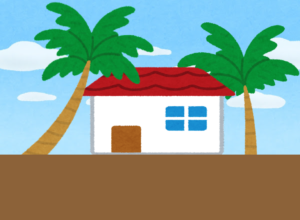
I'm planning to build a house in the Philippines, so I'm doing a lot of research on the housing situation in the Philippines.
Although the Corona disaster has made the economic situation in the Philippines very difficult, housing prices, excluding condominiums, continue to rise.
This is due to the fact that fewer and fewer people are buying condos in the Corona disaster, as condos can be purchased by foreigners and are therefore often purchased by foreign investors.
In general, when the economy is in a downturn, housing prices are expected to stay flat or go down, but the fact that they continue to rise is quite strange.
Although the domestic economy in the Philippines is not good, prices have been rising by more than 4% per year, perhaps due to the continued remittances from overseas Filipino workers (OFWs) who account for about 10% of the GDP.
According to the Philippine Overseas Employment Administration, the number of Filipinos who left the country as OFWs last year was about 550,000, down 74.5 percent from a year ago.
Even in this environment, the Central Bank of the Philippines predicts that remittances will increase by 4% over last year.
This is because Filipinos working abroad are expected to increase their remittances even if they have to withdraw their savings as they are working for their families.
In fact, the increase in June was 6.7%, surpassing forecasts. (Sun Star Cebu)
Because of this, I had thought that housing prices were rising because Filipinos working overseas were buying houses for their families, but I heard that this was not the only reason.
The main reason seems to be that the interest rates on mortgages are dropping.
The policy interest rate in the Philippines has dropped to 2%, and with this, the housing interest rate, which used to be around 10%, is now in the 6% range.
In other words, you can buy a higher grade house even if your monthly loan payment is the same.
It seems that individual house prices are rising because developers who sell houses are also selling a good number of houses.
This phenomenon is particularly evident in the suburbs of Manila and urban areas such as Cebu.
By the way, one thing that surprised me about the housing situation in the Philippines was the percentage of owner-occupied houses.
According to JICA, the percentage of owner-occupied houses in the Philippines as a whole is over 80%. Japan, by the way, is at 60%.
On the other hand, the percentage of owner-occupied houses in Metro Manila is as low as 60%.
Unlike Japan, the Philippines has a large volume of young people and is undergoing urbanization, so there is no doubt that housing prices will continue to rise as demand for housing increases further in the future.









